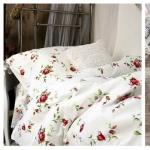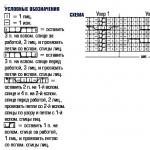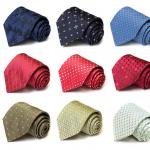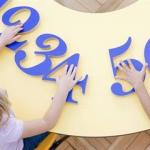Papier mache bricks made from egg trays. Do-it-yourself papier mache is a great opportunity to create original things and crafts
The papier-mâché technique originated at the beginning of the 16th century in France. “Chewed paper” or “torn paper” - this is how the word “papier-mâché” is translated from French.
This technique was widely used in the manufacture of dolls, figurines, masks and even furniture.
As a rule, the papier-mâché technique is carried out in two ways:
1) A mass is made from soft paper and glue that can be easily sculpted. The composition can be given the most different shapes and sculpt any details.
2) Machining. Using an adhesive composition, torn paper is applied in layers.
To make papier mache with your own hands, you should prepare the following materials:
- form for pasting, that is, the base;
- any type of paper (newspaper, toilet paper, sheets of notebooks, egg trays and others);
- PVA or wallpaper glue;
- gauze or bandage;
- brushes;
- scissors or stationery knife;
- paints.
Preparing papier mache with your own hands.
First you need to shred the paper by hand. It is better to choose paper for this different types. For convenience, you need to prepare a sufficient number of pieces so that it is enough for 2-3 layers.Then prepare the glue. The most suitable PVA glue for DIY papier mache. It can be taken in its pure form, or it can be diluted with water. In its pure form, the glue naturally dries faster, but then its consumption is greater.
Accordingly, diluted is well absorbed into the paper, but softens it more and takes a little longer to dry.
During the work process, it is important to take your time and apply each layer after the previous one has dried. The product should also be painted only after all layers have thoroughly dried.
Making a carnival mask from papier mache with your own hands.
Necessary materials:- a ready-made mask made of plastic or you can fashion a mask yourself from plasticine;
- paper;
- glue;
- brush;
- paints;
- putty;
- abrasive tape;
- various elements for decoration;
1. Grease the finished base with oil or Vaseline.
2. Prepare the paper by tearing it into small pieces.
3. Apply the first layer of paper to the mask. Coat each piece with glue and stick on top of each other. Allow the first layer to dry.

4. Next, apply subsequent layers until the mask becomes durable. It is important to apply enough glue to each piece otherwise the mask may fall apart.
5. After all layers have completely dried, cover the model with putty. Remove uneven surfaces using an abrasive tape.
6. Before painting, it is better to saturate the mask with a primer. After drying, cover it with paints.
7. Now you can start decorating. For these purposes, you can use beads, beads, and feathers. There are many options for creativity.







Making a papier mache plate with your own hands.
Perhaps this is the simplest and most affordable thing that even kids can do.Materials:
- plate;
- newsprint;
- cling film;
- PVA glue;
- brush;
- acrylic paints.
1. Wrap the prepared plate in cling film and place it on any work surface.
2. Tear newspaper into small pieces. Remember, the more the merrier.
3. Begin to place the pieces on the plate, coat each one thoroughly with glue. This way you cover the entire surface.
4. Next, apply layer by layer. Depending on the thickness of the newspaper, apply the required number of layers. It is recommended to perform 10-15 layers.
5. All layers must dry well.
6. Next, apply a design to the product as you wish. You can also use a technique such as decoupage to decorate the plate.




Using the papier mache technique with your own hands, you can create a huge number of unique and inimitable products.
The main thing is not to use hair dryers, heaters or batteries for drying. Products should dry only naturally.
Whatever type of papier-mâché you choose, remember that you can achieve a smooth surface and remove any defects by grinding.
Anyone can create an unusual thing using the papier-mâché technique, if only they have the desire!
find out
Good day everyone! And again the idea came to me: to make pebbles with my own hands. Of course, it would be entirely possible to buy ready-made stones and not bother. But... I wanted to do it with my own hands and nothing else. No sooner said than done! I was immersed in the process of creation (in my head at first), and my husband was suspiciously looking sideways at what kind of quirk his wife would exhibit next and how much this same quirk would hook him.
Nothing. Everything turned out well - a little inconvenience in moving and a half-empty refrigerator. It’s so good that there is sausage in stores!
Well, first I’ll show you the result of my actions.
Now closer.
At first I was inclined to make these same stones from papier-mâché. But I didn’t feel like kneading at all. a large number of solution, then mold, dry... Especially dry! But I found a way out! I will make stones dry.
Actually, papier-mâché is not a novelty for me - I myself make products from this mass. Therefore, like a good grain hamster, I have the same amount of cardboard, paper and, of course, egg trays. Where can you get away from them, my dear ones?
So, to implement the idea I needed:
packaging cardboard (regular boxes),
egg trays (paper ones, of course),
paper handkerchiefs (optionally - napkins, toilet paper, A4 paper),
knife, scissors, pencil, long ruler,
glue gun, Titan glue, PVA glue,
wood putty,
acrylic paint+ colors,
varnish (I have acrylic semi-gloss)
First, we take cardboard, mark it and cut it into strips. The width of the strip is the width of the future pebble. Of course, you can change it as you please, but this is the width that suits me. Now we take the trays and tear them into pieces, leaving bulges.
There is no point in leaving the peaks completely. We begin to glue the prepared cardboard strip into pieces. We take Titan glue. It dries quickly and the process does not take much time. Lubricate the pieces without being too zealous. And, placing it on the surface of the cardboard, lightly gather it into a pile, thereby adding relief. We overlap each subsequent piece. I started from the corner: it seemed more convenient to me. The protruding edges of the pieces simply press the relief to become even larger.
If there is anything left, we’ll cut it off with scissors.
Do you see how it works?
Little by little, the strip came to an end. No matter how hard you try, gaps remain. Nothing. You can glue it on top.
Whoops! That's all, there is one strip. This piece took me about 10 minutes. But when you get into the rage, the work goes quite quickly.
These are my favorite scarves. For those who don't know, they are multi-layered. I'm just taking them apart into layers. They fit great!
You see, the edges of the torn pieces stick out inaccurately. I decided to cover them with paper tissues. But at some point there weren’t enough of them and we had to take toilet paper. She has such a peculiarity - to wrinkle like an accordion. I don't like this at all! So what to do? At night, shops are closed, and hunting is worse than bondage. And I only finish my housework in the evening....
In general, yes. For comparison, I divided my strip into three parts and covered it with three types of paper.
Basically, everyone looks good in their own way. But handkerchiefs are still better. There is also a difference in gluing. We smear the base with PVA in any case. You need to be more careful with toilet paper - it quickly gets wet and tears. The handkerchiefs withstand the sticking process normally. But A4 also needs to be additionally coated with PVA. Then she gets wet and lies down wonderfully.
In this way we glue at least one, at least a second, at least a third paper: smacking it with a dry brush.
This is how the relief turned out. We wait for the PVA to dry and cut the strips into bricks.
The next step is to coat it with putty. But first you need to dilute it with water until the consistency of sour cream. Then she will lie down appropriately. Let's dry it.
We arm ourselves with a roller and paint with the colors that suit our design. Just don’t forget - the dark layer comes first, then the lighter one, and then the lighter one. It is better to paint the last layer with a semi-dry brush, lightly touching the protruding parts. Dry again.
Varnishing. I wanted to cover matte varnish, but couldn’t find it in nearby stores. I had to varnish it with semi-gloss.
We glue the “bricks” in pre-marked places on the wall. For this purpose, just find a glue gun. That's exactly what I used.
Don’t forget to leave gaps for the “solution”. We also make it from putty of such a consistency that it does not flow, but also does not get stuck when squeezed out of a plastic bag with a cut off corner or from a pastry syringe.
That's all, actually.
Torn paper - just like that with French stands for papier-mâché. The technique originated in ancient China, which is considered the birthplace of paper. The approximate dating of the oldest product is the 3rd century BC. After this kind crafts began to be made in Persia and Japan, and only by the 17th century papier-mâché began to be used in interior design in Europe.
You can do anything with papier-mâché, you just need a little imagination and a lot of patience

The stone frame in this photo is made of papier-mâché

At first glance, the figure seems to be made of non-ferrous metal, but in fact there is paper inside it
Decorative interior elements, bowls, vases, photo frames and much more are made from a mixture of paper and glue.

The papier-mâché technique uses “paper dough” consisting of glue and soft paper.
The most common techniques for making papier-mâché products:
There are no special issues with the first and last options, but preparing the mixture for paper products requires more careful consideration.

The machining technique allows you to create thin and durable things
Recipes for preparing papier-mâché mixture
There are as many craftsmen as there are so many options for preparing a mass of papier-mâché. Below are the most popular posts that were liked by many needlewomen. Prepared mixtures should be stored in sealed plastic bags or plastic containers. This will help keep the material moist. Containers must be placed in the refrigerator.

Softened paper can be prepared in advance, but glue must be added immediately before work.
First option
We will need:
- approximately 60 grams toilet paper dark color;
- dry chalk;
- potato starch;
- clay, but it can be excluded;
- PVA glue;
- Bustilat glue.

Source materials
The unwound paper is placed in a bowl of water to swell, after which it is wrung out and crushed into flakes.

Ground mass
At this stage, the weight of the mass should be 280 g. Next, add stationery glue (50 ml) and 3 tablespoons of Bustilat, mix with a mixer. Add 3 small spoons of clay and starch and mix again until smooth. Bring the papier-mâché mixture to readiness by kneading with the addition of dry ingredients.

The finished mass can be stored for quite a long time, depending on humidity
Second option
Porcelain papier-mâché is not the cheapest to make, but is distinguished by its quality and slight translucency. Previously used to make dolls or kitchen utensils.
It requires high quality toilet paper (white), cold-pressed flax oil (1 tbsp.), wallpaper glue (2 tbsp.).

The mass according to this recipe is more plastic
The best papier-mâché ideas
The use of papier-mâché in the interior, ideas for which are easy to come up with on your own or to spy on in posts liked by numerous network users. Products made using this technique are lightweight, but quite durable. With her help it will turn out amazing easter bunny or even wall decor.

Things made using the papier-mâché technique are quite durable, lightweight, and most importantly – unique
Vases made using papier-mâché technique
A correctly selected vase can decorate any room design and become its highlight. DIY papier-mâché decor allows you to bring any idea to life. Such things will be carriers positive energy creator.

You can’t tell right away that this vase is made of paper.
To create it you will need:
- newsprint;
- packaging paper;
- glue;
- stationery knife;
- not a natural brush;
- primer or acrylic paint;
- finishing paint;
- decorative elements;
- petrolatum.

To work you will need an old vase as a base.
Before pasting with cut pieces of paper, the form must be treated with Vaseline so that it can be easily removed. The scraps are glued in layers, alternating layers of newspaper and thicker paper. You need to make at least six of them. Let the workpiece dry completely.

The newspaper is cut into small pieces and pasted in several layers

We cut and pull out the vase from the newspaper shell
After drying, the vase is opened with a white primer, sanded and then covered with a layer of paint that was chosen. At the last stage, the decor is attached.

Be sure to rip the vase with primer

Twine can be used as decoration
Wall decoration
The most common DIY papier-mâché wall decor is brick or stone. To make them, you can use recipe No. 2 for preparing the mass. You will also need a form made of glass or plastic. You can also use cardboard juice packaging, which is covered with a bag.

The cardboard is torn into pieces and poured with boiling water. The cooled mass is thoroughly crushed and dried
The finished mixture is distributed over the mold, making a brick. Allow to set and place on paper until completely dry. If papier-mâché bricks are intended to be used in the interior of a house on curved surfaces or corners, then they should be attached slightly damp to the wall. Completely dry workpieces will not bend, but they can be easily sanded.

The paper pulp is mixed with glue and placed in molds. Dried bricks are fixed on the wall
The bricks glued to the surface are rubbed and primed. After that, you can start painting it in the desired color or several shades. At the last stage, everything is opened with varnish so that the decorative elements can be wiped with a damp cloth.

The final stage is painting
And also, wall decor with papier technique can be used to make elements in the form of an ornament or volumetric flowers. For experienced craftsmen, there are options for making three-dimensional paintings that will be an excellent addition to the design.
African motives
Papier-mâché wall decor includes the making of once popular ritual masks. Such souvenirs will be an excellent addition to the African style, which includes animal prints and an abundance of ornaments.

Before work, you need to draw a sketch of your future face or take a ready-made mask you like as a sample.
To make them you will need:
- mass of papier-mâché;
- food trays of the required size;
- primer;
- paints.
A mass is applied to the base, covering the entire tray in an even layer. Next, with the help of simple manipulations, the nose, lips, eyeballs and brow ridges are formed. The workpiece should dry well.

A thick layer of mass can dry up to two days
Then the mask is primed and sanded. And the final stage is painting. A loop is attached to the back, from which you can hang the product. The work is completed.

Before painting, the mask must be cleaned with sandpaper and, ideally, covered with a thin layer of wood putty
Such masks are made of any required size and with different facial expressions. Can be used as hair natural threads and wooden beads strung on them.

Funny bunnies using papier-mâché technique

Decorative tableware to decorate the kitchen or living room
To make papier-mâché, not only toilet paper is used. Ordinary egg trays can also be a good base. They are crushed and soaked in water, and otherwise the technology is repeated. You don’t have to take a lot of materials and limit yourself to glue and paper pulp. Have fun making papier-mâché decor for your home!
Video: master class on making 3D paintings for the interior
Photo: 50 DIY ideas

















Traditionally, papier-mâché is used to make masks. The material, created from improvised means, takes absolutely any form. Papier-mâché began to be used in interiors quite recently. The material was associated only with children's creativity and the creation of fakes, but from “wet paper” you can make a designer bas-relief, a three-dimensional panel, an exclusive vase and even artificial brick or stone. Papier-mâché decor is easy to create, but at the same time has incredible hardness and durability. Unlike glass ones, such decorations will not break, but how much do high-quality imitations cost? natural stone It’s better to keep silent. Let's take a closer look at several master classes on making papier-mâché and get inspired creative ideas other decorators.
Origin story
The name papier-mâché means “chewed paper” in French. Although the original play dough's fancy name was actually invented in France, its true homeland was China. Back in ancient times, when paper was invented here, they simultaneously developed a simple method for creating a special material that was pliable when worked, but strong after drying. Papier-mâché was given additional rigidity by applying several layers of varnish to the finished product. The Chinese preferred to create military helmets from paper pulp, which really protected their heads well, and even elements of armor. It would seem that what could be more stupid than trusting your life to soaked and glued paper, but the ammunition was popular. The arrows did not pierce it, and there was no need to fear the glancing blows of swords at all. In addition, papier-mâché, compared to metal uniforms, was as light as a feather, which allowed Chinese warriors to move with greater speed and agility.
The Japanese took over the baton next. Having obtained the papier-mâché recipe, they adapted it to their culture, creating original decorations for holidays and traditional ceremonies for this country - masks - from paper dough. The products were sanded with sandpaper to a waxy shine and covered with additional protective layers and painted. The result was a magnificent and easy-to-make decoration. From Japan, the papier-mâché recipe came to Europe, where the French gave it a well-known name, and the British improved it. A certain John Baskerville, a former printer, opened the production of papier-mâché decor. At first he used Japanese samples, and then began to introduce his own ideas. Plates, boxes, figurines of people and animals, decorative masks and even watches enjoyed unprecedented popularity. Assistant decorator Henry Clay experimented with the compositions, trying to find an original recipe that would gain even greater strength. And, ultimately, he succeeded. He dried the soaked mass like clay under the influence of high temperatures, and it turned out to be incredibly hard, not inferior in strength even to wood. Clay patented his recipe.
Subsequently, several more manufacturing companies were opened original jewelry from papier-mâché, but “paper dough” eventually migrated into creativity and hobby. It was mixed at home and made into dolls for children, baskets for candy, decorative saucers, vases, and lacquered jewelry boxes. The material is especially popular as a cheap imitation of expensive surfaces: metal, wood, ceramics, stone. To make it look like the original, you just need to choose the right paints and create an authentic texture, which is easy to achieve by taking a cast from a real surface. The technique of making papier-mâché came to Russia during the time of Peter I. When working with paper pulp, it is worth considering that the products shrink greatly after drying. Volume loss can be up to 5-8%. Therefore, it is necessary to make the decor larger in size, taking into account this feature of the mastic.
Products made from papier-mâché will last a long time if the room maintains an average level of humidity. Constant “wetting” will greatly reduce the lifespan of the jewelry.
Manufacturing technique
As for manufacturing techniques, two main methods are used:
- Mixing the mass in a container.
- Applying paper layers to the prepared mold.
The first option is suitable for cases when the product will be sculpted by hand or the mixture will be poured into molds. The process itself is reminiscent of working with plasticine or clay. The second method is useful if you use molds that cannot be filled from the inside, but the master will not be able to repeat their shape. Usually we are talking about balls, that is, products that are difficult to make perfect on your own.
Recipes for preparing mass
Although the basis in any technique is paper, it can be “cooked” in completely different ways using unusual additional ingredients. Depending on the recipe, chalk, rosin, flour, drying oil, gypsum, starch, paste and even crushed ingredients are added to the compositions. cereals. Sometimes rather unusual ingredients are used, but we will look at two traditional recipes that papier-mâché sculpting masters advise beginners.
Recipe No. 1
For the first recipe you will need paper (toilet, office, newspaper), liquid soap, PVA glue, hot water and construction putty. Work begins with kneading the dough. About 8 rolls of toilet paper (this will be enough to get about 2 kg of finished mass) are crushed and placed in a clean container. She's being flooded hot water. The paper is allowed to “rest” for several hours. Now it is placed in gauze, folded several times, fabric (not very dense) or a mosquito net. The mass is squeezed out, but not dry. The paper is then shredded again. For these purposes, use a mixer or blender. The result is a fibrous dough, to which about 1 tbsp is added. a spoonful of soap (even regular Fairy dishwashing detergent will do). Stir. Now PVA glue is gradually poured into the mass. Add it in portions so that the composition is evenly mixed. There is no exact dosage of glue. Here the master decides for himself how thick the papier-mâché he needs. After glue, add 4-5 tbsp to the dough. spoons of putty. The mass is kneaded again. Papier-mâché is ready to use.
Recipe No. 2
To prepare a composition according to a different recipe you will need:
- 0.5 kg of toilet paper.
- 0.5 kg PVA glue.
- 2-3 tbsp. spoons of flax oil.
- 1.5 liters of warm water.
The paper is crushed and filled with water in a clean container. The future dough is left for a day. After the paper swells, place it in portions in gauze and squeeze out. Now add glue to the bowl. It should be divided into five parts and gradually poured into the paper pulp, mixing thoroughly each time. Now flax oil is added to the almost finished papier-mâché, which will make it possible to obtain more elastic products. The mass is mixed again and the modeling paper dough is ready.
Vases, small sculptures, bowls, chests, caskets, boxes, and dolls are made from papier-mâché. Using paper pulp you can create a bas-relief or a three-dimensional panel on the wall. Pebbles, pebbles, and bricks are made from the material, which after painting differ from the real ones only in weight. Unusual decor is fixed on walls, fireplaces, around door or arched openings. This option is ideal for a budget renovation if the designer has free time to tinker with the creation of numerous elements.
Vases
The easiest way to make vases is by placing pieces on a mold. The base can be old or cracked ceramics that you want to recreate. Newspaper sheets are crushed, soaked in glue and placed on the vase in layers. After drying, the resulting product is cut in half, separated from the sample, and then re-attached with wood glue. To get a round vase use balloon. After the papier-mâché has hardened, it is pierced with a needle and removed through a small hole, which is also subsequently glued together. The pliability of the material allows you to create complex, openwork surfaces. Additionally, the decoration is decorated eggshell, threads that form patterns, accessories, beads, buttons.
Wall decoration
In wall decoration, papier-mâché is used to create complex artistic compositions and to make cheap decorative finishing. In the first case, you will need a plywood sheet on which the design is applied. Then the paper-glue mass is diluted, from which individual fragments of the picture are formed. After they dry, the parts are glued to the base strictly along the contours of the design and painted. If you put in enough effort, you can get fantastic panels with images of fairy-tale princesses and unreal creatures. This decoration is ideal for the interior of a children's room. The bedroom or living room is decorated with paintings with images of three-dimensional flowers, birds, animals, trees. A still life or relief painting will look impressive in the kitchen. vine. To make bricks or stones from the material, molds must be prepared. To do this, select a suitable sample (or better yet, a couple), place it in a container and fill it with plaster. When you need to decorate a large section of the wall, use several molds, as this will significantly speed up the labor-intensive stamping process. Instead of toilet paper, it is recommended to soak egg trays. Alabaster is definitely added to the composition for greater strength. The products are dried well and fixed to the wall using wood glue. If you need a smooth surface, then artificial stones sanded with sandpaper.
Panels where part of the design is made with paints, and only accent details are decorated with papier-mâché, will look unusual.
Decorative elements and crafts
You can make it from papier-mâché door handles or hammers, decorative wreaths, which are additionally decorated with twigs, burlap, pine cones and ribbons. The material is often used to create jewelry boxes, pirate treasure chests, piggy banks, candlesticks and artificial fruits. In the latter case, it is better to sacrifice the original treat in order to create a form. By the way, after drying, papier-mâché will be easier to separate from the mold if it is pre-lubricated with Vaseline. Complex decorations are also made from paper pulp. For example, a product decorative hand, on whose fingers bracelets and beads are hung. Furniture is decorated with paper stucco molding. Curls made from papier-mâché are no worse than those made from plaster. solar system from miniature planets, which are created using the same balloons, will decorate the room of a young astronomer.



Many people approach the process of creating decorative brickwork in the interior very creatively, especially if they need to get a beautiful brick wall or other elements for interior design in the Loft style http://rmnt.net/stil-loft/2816. The fact is that modern construction stores vying with each other to offer an endless assortment of finishing materials, but not every average person can afford the current prices.

What to do when you want to decorate your home with taste, but without putting much strain on the family budget. One solution to this problem would be the production of decorative bricks. Of course, if you wish, you can find them at the nearest hardware store, but here you can use your imagination and ingenuity, while saving a decent amount.

So, making decorative bricks with your own hands is a rather labor-intensive process, although it is fully justified. There are several ways to obtain this original finishing material. We will look at one of them - the formation of papier-mâché bricks.

In this way, you can get the result in the form of a finished building material without using a wooden base, but we recommend this proven option to you, although it requires a little more materials.

So, to obtain the bases for the bricks being made, you need to cut enough pieces of cardboard, or even better, MDF or something similar in a rectangular shape, for example, measuring 6.5x20cm.


We spread the base with glue and lay out the pre-prepared mass: soak the egg trays in water, and then, after soaking them, tear them into small pieces with your hands, dry them out and fill them with PVA glue, add color.

Place the finished brick in a warm place and wait until it dries completely. Then we cover the top with a layer of paint. desired color using a roller.

And when the paint dries, we cover it with a patina of a lighter tone than the first time. We glue the facing material obtained in this way to the wall using “liquid nails”. We seal the seams with a special grout - the decorative brick wall is ready.

There are also other options and methods for creating decorative brickwork. Watch the video below for one of them:






